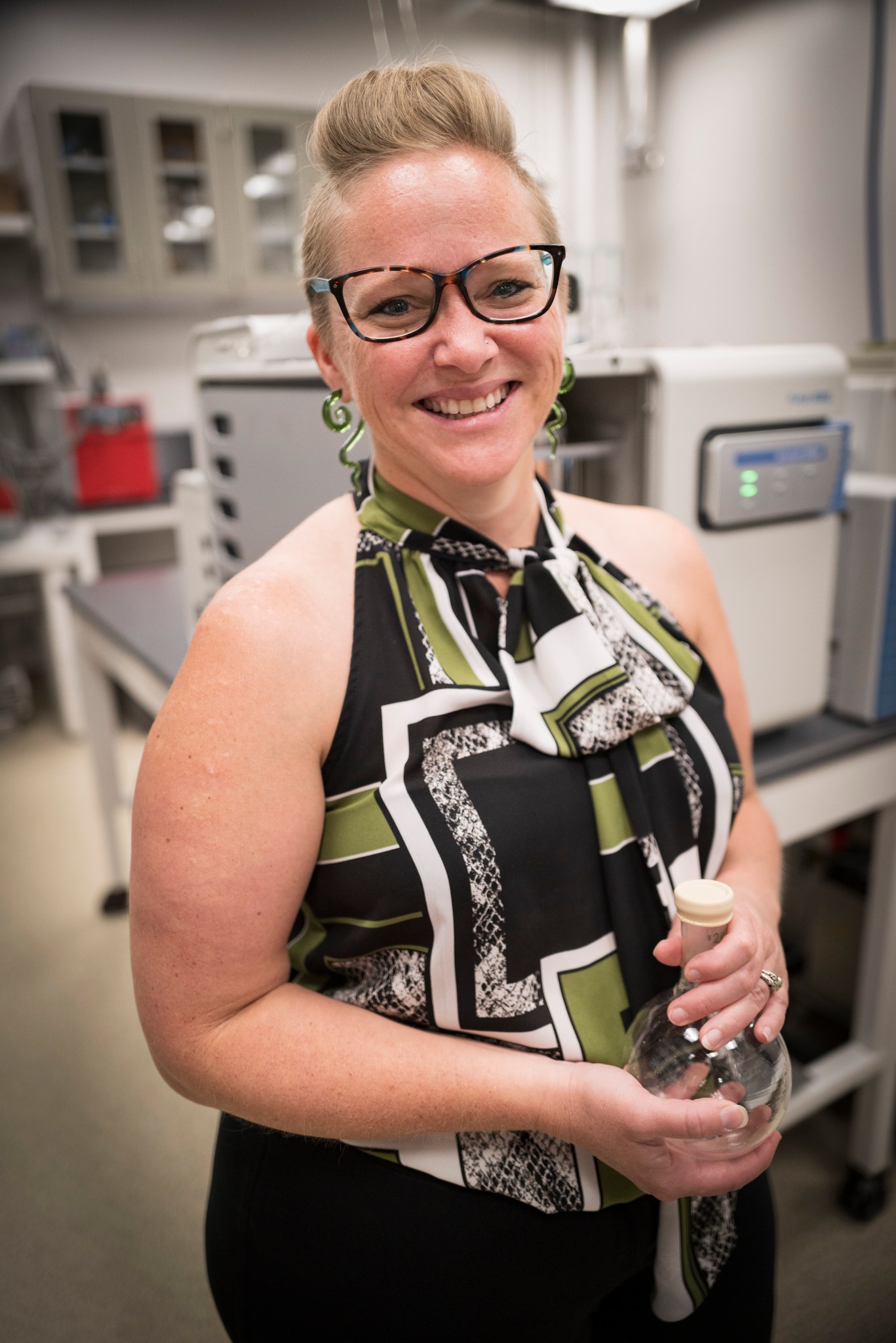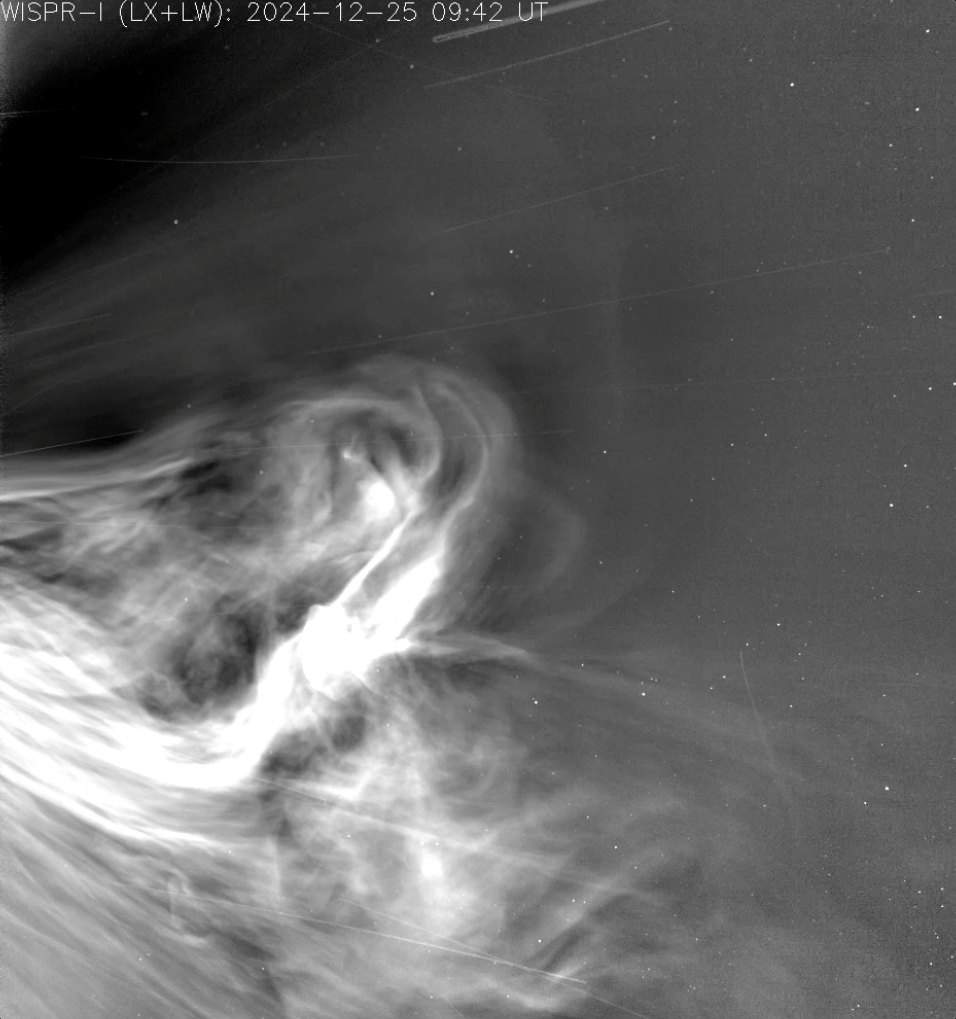Bethany Theiling is a planetary research scientist at NASA's Goddard Space Flight Center in Greenbelt, Maryland.
Name: Bethany Theiling
Formal Job Classification: Planetary research scientist
Organization: Planetary Environment Laboratory, Science Directorate (Code 699)
What do you do and what is most interesting about your role here at Goddard? How do you help support Goddard’s mission?
I am an ocean worlds geochemist, which combines chemistry and geology. I study oceans across the solar system including those on Earth.
What is your educational background?
I have a B.A. in anthropology and linguistics from Florida State University, a Master of Science in geology from the University of Georgia, and a Ph.D. in Earth and planetary sciences from the University of New Mexico.
Where did you learn the techniques that make you successful?
I ran the stable isotope lab at Purdue University. I was responsible for maintaining the facility and mentoring the students. I had to be very flexible and have a very deep understanding of all the equipment and everyone’s projects.
I then did a postdoc at NASA’s Jet Propulsion Laboratory in Southern California. That was my introduction to planetary science. I fell in love with Europa and icy ocean worlds.
What drew you to being a geology professor at the University of Tulsa?
I always wanted to be a professor. I love everything about it; that you can teach, do research and mentor students. I thought that being a professor gave you total freedom over anything you wanted to explore. I loved it, but I had an abundance of research ideas and did not have the time and resources to pursue them.
How did you come to Goddard? What was your impression?
I started working at Goddard in August 2019 as a planetary research scientist.
I did not know that a place like Goddard existed – a place that is truly supportive of the people who work there. The employees and management have an incredible positivity. Within the planetary science guideposts, I have the freedom to pursue almost any line of research I am able to get funded.
What is your favorite part about laboratory work? Field work?
In my laboratory work, I get to create other worlds in the lab.
Just over a year ago, I completed fieldwork exploring lava caves on volcanos in Hawaii. We were trying to evaluate the atmosphere inside the lava cave to create a method for astronauts to determine environmental conditions in caves on Mars or the Moon. We also used isotopes in the air to identify life, which hopefully can also be used in a future mission.
What is the most exciting research you are doing?
I am very excited about my work developing an autonomous science agent. My team recognizes that for these planetary ocean worlds, it will be very challenging to explore and return data. We are hoping to develop artificial intelligence (AI) that can act as a scientist aboard a spacecraft. Many of the current autonomous functions of a spacecraft are robotic.
We are trying to develop what we are terming “science autonomy.” We want multiple instruments to be able to collect data on board, that the science agent can analyze and make decisions about, including returning this information to Earth. This includes prioritizing, transmitting, and deciding where and when to take the next samples.
The advantage of an AI agent is that we can avoid the sometimes 12-plus-hour delay in communicating with the spacecraft. We are hoping to do “opportunistic science,” meaning respond to real-time events.
We have a series of capability demonstrations, but an AI science agent is a few years away. We can already do simple tasks, but cannot yet do opportunistic science.
Ultimately no person can be on these spacecraft. We are trying to create an AI science agent to find “eureka moments” in real time on its own. We are trying to create AI independence through multiple observations.
What advice do you give the people you mentor?
Although I customize my advice, I am often asked what characteristics make someone successful and able to get through tough times. I always say: creativity and tenacity. I constantly come up with ideas, some better than others, and I explore them. I think about problems in creative ways. I stick with whatever I am thinking about until I figure it out, but sometimes you need to know when enough is enough. Creativity comes from myself, but also from listening to the people on my team.
These traits also describe Goddard’s culture, which is another reason why I love Goddard so much.
What do you do for fun?
So many things! Here’s just a few. I paint abstract art and impressionism in acrylics and watercolors. In the past, I had a costuming company for belly dancers and regular costumes. I also trained in opera and am getting back into it. I also love gardening and hiking.
Who inspires you?
My astrophysicist husband, who is a professor of physics and astronomy, is the most wonderful person. He has supported every wild idea I have ever had and helps me edit them. I can be up in the clouds and he brings me back down to earth, which I sometimes need. He has inspired most of my ideas in some way. He’s my best friend, and we have been together for over two decades.
My vocal coach is incredibly supportive and wants to cultivate each of his students to find their own unique voice and not emulate someone else’s voice. That “voice” – perspective – is something I nurture in my hobbies and career.
What is your “three-word memoir”?
Opportunity is everywhere.
This applies to me personally and also one I cultivate in our AI science agent.
By Elizabeth M. Jarrell
NASA’s Goddard Space Flight Center, Greenbelt, Md.
Conversations With Goddard is a collection of Q&A profiles highlighting the breadth and depth of NASA’s Goddard Space Flight Center’s talented and diverse workforce. The Conversations have been published twice a month on average since May 2011. Read past editions on Goddard’s “Our People” webpage.

































